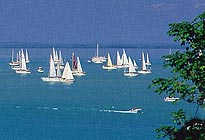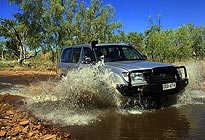Travel to the Northern Territory
The Northern Territory has a rich history of visitors and residents, from early explorers to 20th-century soldiers and a wide range of indigenous cultures.
Named after the famed biologist, Charles Darwin, it’s home to the iconic Uluru and the World Heritage listed Kakadu National Park that’s spread over almost 20,000 km2!
key facts

- Location: The northern half of the continent, in between Western Australia and Queensland
- Population: 244,000
- Size: 1,349,129 km2
weather
The NT has a desert climate in central Australia and a tropical monsoonal climate in the coastal north that sees a dramatic, stormy wet season and a sunny dry season.
- Summer average: 27–33°C
- Winter average: 12–24°C
- Average rainfall: 200–2,000 mm
about the northern territory

Due to its varied landscapes and the broad distances between towns and cities, the NT is known for its cultural and geographical diversity.
With the highest percentage of indigenous people in its populace, it’s home to Arnhem Land, which is owned by the Yolngu people who have occupied the region for at least 60,000 years.
Arnhem Land is famed for its stunning coastlines, rainforests and fishing locations, as well as being the birthplace of the iconic indigenous Australian instrument, the didgeridoo.
about darwin

Darwin is home to a wide variety of nationalities and ethnicities. This multicultural vibe is highlighted by its frequent cultural festivals and weekly craft and food markets.
The traditional owners of Darwin are the Larakia people, who are an Aboriginal nation today numbering around 2,000 people.
The people of Darwin enjoy beautiful outdoor weather from May to September, when sunny days and cool nights make it a popular season for visitors.
Due to its monsoonal climate, the city experiences the highest level of rainfall between December and March, which is often accompanied by spectacular lightning storms.


